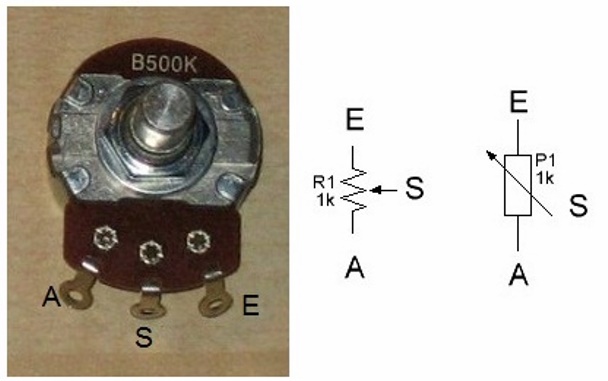The resistor
Resistors are available in different designs and with different properties. The most important are electric strength and power. In order not to get confused, I have only the following types in stock:
- 0.5W metal film 1% 350V
- 2W Metalloxifilm 1% 500V
- 5 and 10W wire 5% 500V
And a few special types that I can't get at my trader in the desired version. The picture shows a 5W metal oxide 1% and a power resistor with 25W.
The color rings are used for indication of the resistor value. Here is a link to a calculator.
For parallel connection of two equal resistors, the resistor value cuts in half, the power doubles up. As formula: 1 / Rtotal = 1 / R1 + 1 / R2 + 1 / R3 ....
With series connection of two equal resistors, the value gets added, the electric strength doubled. As formula: Rtotal = R1 + R2 + R3 ...
Pictured are some common symbols for resistor and potentiometer.
Potentiometers are variable resistors. Inside, between the end terminals, a carbonaceous layer is located having the rated value as resistor value. The middle terminal leads to a sliding contact.
The resistor value on the "coal path" may increase linear (B), logarithmic (A) or vice versa logarithmic (C). This is, where the categories of the potentiometers come from. Be careful with the letters A / B / C, which are not standardized. The statement above is true for Europe.
Now, which port is what ... the diagram can be a bit confusing. Therefore, the connections are assigned as A for top (1), S for sliding contact (2) and E for end (3). Sometimes, numbers are given, as indicated in the text.
CC resistors, also known as Carbon Comp, are often called the measure of things. They have large tolerances, change its value depending on temperature and age and make a lot of white noise. Meanwhile, they are re-produced for the "component disciples" ... juicy priced.
I have a few and use them from time to time to repair old equipment historically correct.



